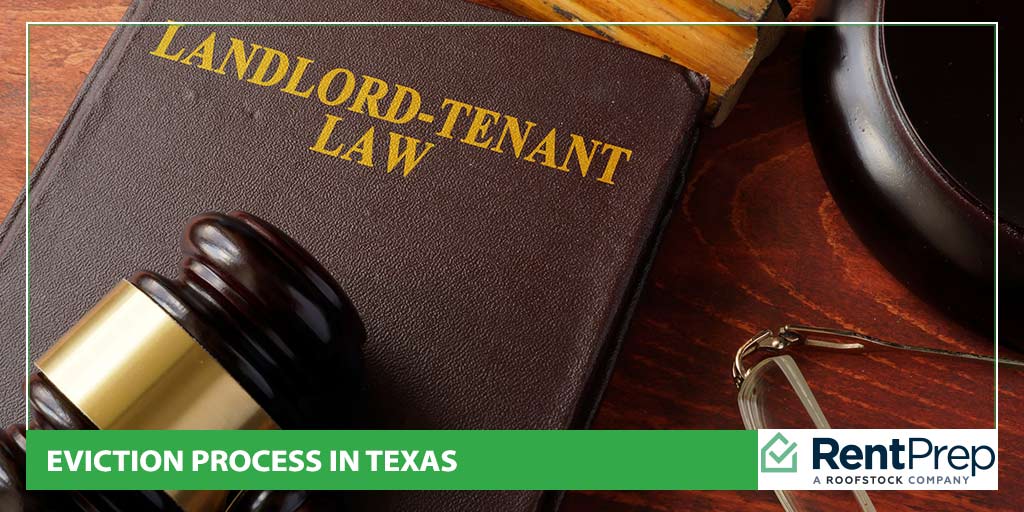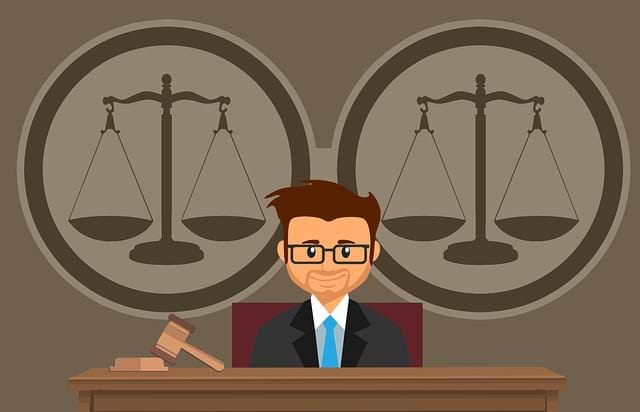
When people talk about Texas, they often talk about the state’s unofficial motto: Go Big Or Go Home. Working as a landlord in the state will sometimes require you to use this mentality as well. Because without taking big actions, you could wind up taking on big losses!
One case where go big or go home can really pay off is when you’re dealing with the eviction process in Texas. While some landlords want to be the “nice guy” landlord and let their tenants stay even through nonpayment of rent or other rental issues, doing this is ultimately going to cause your business to lose money.
That is why you should Go Big on learning how to properly evict someone according to the current Texas eviction laws. Eviction law can be quite complicated, and that can be intimidating even for experienced landlords.
Our landlord guide to these rules serves to help clear up confusion about eviction procedures in Texas. With this guide, you’ll be able to handle these situations quickly, efficiently, and without any trouble from the law!
A Table Of Contents For Evicting A Tenant In Texas
-
- Eviction: Definition & Importance
- Legal Eviction Reasons Under Texas Eviction Law
- How To Evict Someone In Texas
- The Texas Eviction Process: Timeline & Expectations
- Evicting A Tenant In Texas: You Can Do It!
Eviction: Definition & Importance
A big part of knowing how to properly handle an eviction situation is to understand exactly what it is you are doing and why it is so important to do it.
Definition Of Eviction
First and foremost, eviction is a legal process. Through this process, a landowner is able to regain primary control and possession of their land from a tenant or squatter that has forfeited the right to be there.
The eviction process is legally regulated in each state. Every state has its own specific laws for landlords and tenants that must be followed. In eviction cases, state and local laws always trump any terms laid out in a lease, so it is important to make sure that your lease complies with these laws to prevent an illegal eviction.
Why You Need To Take Eviction Seriously
A lot of landlords will wait longer than they should to send out an eviction notice to problematic tenants. Many find that eviction is too overwhelming to take on; others just want to find a different solution.
Ultimately, however, putting off an eviction is just going to hurt you and the tenant more than doing it as soon as possible.
Your properties are the base of your business. When tenants don’t pay, damage the property intentionally, or otherwise put your property at risk, you need to quickly and efficiently take back control of the property to prevent long-term financial damage to your business.
Eviction isn’t impossible to carry out. In fact, the strict laws that each state has in place about eviction make it easier to complete, not harder. With the help of today’s guide, you no longer need to fear the eviction process in Texas if you find yourself in a dire tenant situation in the future.
Legal Eviction Reasons Under Texas Eviction Law
Eviction cannot happen just because you don’t like someone and want them to move out of your property. If they have a lease and have not violated it, simply disliking the tenant isn’t enough of a reason to file for eviction.
There are specific reasons that are legally permissible for eviction under Texas eviction laws.
Lease Violations

- One of the most common reasons for Texas landlords to have to send out an eviction notice is a lease violation. A lease violation is when a tenant breaks the rules that are outlined in the lease agreement that both parties signed before they moved into your property.There are a lot of different problems that can fall into the category of lease violation, but these are the most common issues that can lead to eviction in Texas in this category:
- Late or unpaid rent
- Smoking in non-smoking properties
- Pets on properties with a no-pet clause
- More tenants than allowed on property
- Illegal subletting
- Illegal activity
- Intentional damage to the property
When a tenant does any of the above or breaks terms in the lease in some other way, you have the legal grounds that you need to move forward with the eviction process. We will cover the actual notice and filing process in the upcoming sections of today’s guide!
Changing The Property
Another legal reason for eviction in some cases is that you are going to be making big changes to the property by taking it off the rental market, selling it to another owner, or doing major and necessary renovations.
When any of these situations are occurring, you may have the legal grounds necessary to end the lease agreement you have with a tenant early, but the exact determination of whether or not it can be ended early will depend on the lease terms and situation.
Putting Health Or Safety At Risk
It is part of your responsibility as a Texas landlord to keep properties in safe and liveable conditions. This means that heating, air conditioning, plumbing, and more must all be maintained on your end, but your tenant also has responsibilities on their end, too.
Discovering that a tenant has let the property get so messy that it is a risk to their health and the health of any neighbors is legal grounds of eviction in the state of Texas.
Additionally, it is possible that mold can start growing or a weather system can cause big damages like a gas leak. In these cases, you won’t be able to make the fixes while the tenant lives there, and you might not be able to make the fixes quickly. Sometimes, you can evict a tenant to deal with the problem.
Lies & Dangerous Behavior
There are a few more things that can be the basis for eviction in Texas.
First, you can evict someone if you discover that they lied about any crucial information on their rental application such as their name, work history, or other information that was used to make the decision to rent to them.
Second, you can evict someone in Texas if they are making threats to you, another tenant, a neighbor, or other individuals in the community.
What You CAN’T Evict For
Just as there are a lot of reasons that you can evict a tenant from your property, there are also a lot of reasons that you cannot use as the basis for eviction.
Mostly, you cannot evict someone for their race, religion, color, sex, disability, or other protected status. All of these factors are protected as part of the Fair Housing Act, so they cannot be used to make any decisions regarding a tenant living in your property.
Additionally, you cannot evict someone for filing a complaint, asking for repairs, or simply because you don’t like them. None of these reasons would stand up in court, and you would find yourself in some legal trouble if you tried to force an eviction for these reasons.
How To Evict Someone In Texas
It’s time that we teach you how to evict a tenant in Texas for nonpayment, without a lease, and many other situations that you might not know how to handle! Don’t worry if you’re feeling stressed. Following this guide step-by-step will help you to get a handle on the eviction.
Following this guide is important! If you try to evict a tenant by simply forcing them to leave, turning off the utilities, or through any other illegal action, you could be fined $1,000 or more. Make sure that you complete evictions by the book.
Step 1: Identify The Cause
The first thing that you need to do when preparing to evict someone is to identify the cause. Why do you want to evict them? Is that reason a legal reason to evict? Do you have the necessary proof of that reason? Should the tenant get a chance to remedy the problem before you evict?
These are all important questions to answer before you move on to step 2. Once you have all of that information prepared, you’ll be better equipped to continue the eviction process.
Step 2: Send An Eviction Notice

Once you’ve figured out why you are evicting, it’s time to let the tenant know what the situation is. They need to be given written information about what is happening, why it is happening, and what they can do about it.
The notice that you send needs to include all of that information. Be as specific and detailed as possible. Did they break a specific clause in the lease? Let them know which one. Can they fix it? Let them know exactly what they must do and when they must do it by.
Written eviction notices must be delivered properly. In Texas, be sure to do one (or more!) of the following when delivering:
- Attach to the main door and mail a copy from the same county
- Give to the tenant directly
- Send by certified mail
We typically recommend that you send the notice by certified mail and drop off a copy as well to be sure that the tenant sees as soon as possible.
The eviction notice should also include a time period. During this period, the tenant has a chance to remedy the situation. The most common eviction notice periods in Texas are as follows:
- Nonpayment of rent: 3-day notice to pay or quit
- Owner is selling the property: 30-day notice
- Lease violation: 3-day notice to cure or quit
- Monthly lease: 30-day notice
If the tenant does not remedy the situation or move out within the time period, it’s time to file for eviction with the court.
Step 3: Filing For Eviction
Filing for eviction at your local courthouse is relatively easy to do! While there will be a filing fee when you do so, you only need to have the basic information about yourself, the tenant, the property, and the problem at hand.
Once you have filled out the appropriate paperwork, the court will take over as mediator. They will send out the necessary documents to you and the tenant, collect information from both parties, and ultimately set a court date if a resolution is not reached.
Step 4: Court Hearing
At the court hearing, you will have a chance to prove that you have a correct and legal right to evict the tenant from your property. Your goal at the trial is not to vilify the tenant, but to clearly lay out the ways in which they broke the terms of the agreement and thus should not be allowed to continue their tenancy.
The best way to do this is to have great evidence!
The number one thing that you need to prepare leading up to the trial is that evidence. From copies of the deed to receipts to the lease agreement itself, make sure that you have all copies and proof that illustrate your claims with you when you come to court. As the eviction filer, the burden of evidence falls on you.
Court Results
 The part of the court hearing that you’re probably most curious about is the outcome, right?
The part of the court hearing that you’re probably most curious about is the outcome, right?There are a few different ways that the hearing can end:
- The court rules in your favor. The tenant has five days to leave the property, or they can appeal the ruling.
- The court rules against you. You have five days to appeal the ruling. Only appeal if you can find better evidence for the suit.
- The tenant does not show up, so the court rules in your favor. They have five days to leave or appeal the ruling.
- The court suggests that you find a solution between you and give the tenant another chance to make amends. If they do not, you will have a shoo-in eviction case in the future.
Step 5: The Eviction
If you win your eviction case, the tenant has five days to leave the property or file an appeal. If they do neither, you might be at a loss as to what you should do next.
You will need to go back to the courthouse and use your eviction ruling to file for a Writ of Possession. This writ can then be given to the local constable who will take over on removing the tenant from the property. There is a fee involved in this, but it will finalize your eviction with the tenant being removed from the property.
From the time that the constable visits the property, the tenant will have 24 hours to move out. If they don’t leave on time, the constable will remove the tenant and their belongings. Keep reading to find out more about what to do if a tenant’s belongings are left behind!
The Texas Eviction Process: Timeline & Cost
At a minimum, an eviction in Texas is likely to cost you around $250 and will take about three weeks. It is, however, very easy for evictions to cost more and take longer depending on the specific circumstances that you are dealing with.
Consider that you might need to end up paying more to re-file if the eviction doesn’t go well the first time, the court might decide that you need to give the tenant more time, or you may need to pay a constable to get the tenant to leave following the eviction hearing. All of these things can add up!
It is very important that you make your lease clear about who is responsible for the costs in eviction situations. For example, you are legally responsible for holding onto tenant belongings for at least 30 days after they move out if they leave anything behind. This means that you may need to store the items, and that costs money!
Clarifying who is responsible for every single cost in the lease will prevent you from being burdened with every single fee in the end.
Evicting A Tenant In Texas: You Can Do It!
Does the entire eviction process in Texas make more sense now?
We sure hope so!
We know that eviction is already a hard enough situation to deal with even when you understand how it works. This guide and the resources we’ve provided here should help you to find the best way out. And remember, taking more time to screen tenants with the right tools can help ensure that you don’t have to deal with eviction at all!




 The part of the court hearing that you’re probably most curious about is the outcome, right?
The part of the court hearing that you’re probably most curious about is the outcome, right?